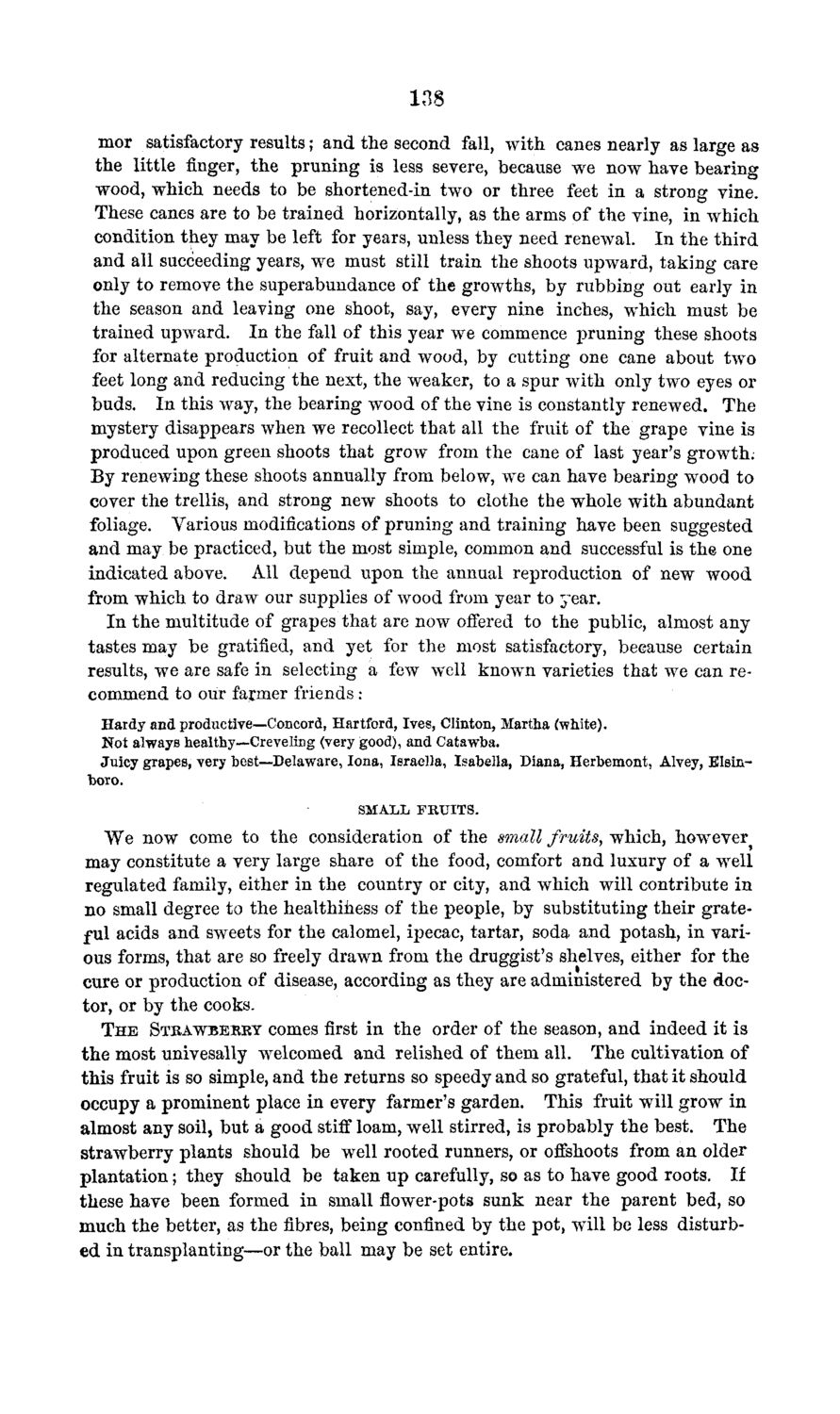| |
| |
Caption: Board of Trustees Minutes - 1869
This is a reduced-resolution page image for fast online browsing.

EXTRACTED TEXT FROM PAGE:
138 mor satisfactory results; and the second fall, with canes nearly as large as the little finger, the pruning is less severe, because we now have bearing wood, which needs to be shortened-in two or three feet in a strong vine. These canes are to be trained horizontally, as the arms of the vine, in which condition they may be left for years, unless they need renewal. In the third and all succeeding years, we must still train the shoots upward, taking care only to remove the superabundance of the growths, by rubbing out early in the season and leaving one shoot, say, every nine inches, which must be trained upward. In the fall of this year we commence pruning these shoots for alternate production of fruit and wood, by cutting one cane about two feet long and reducing the next, the weaker, to a spur with only two eyes or buds. In this way, the bearing wood of the vine is constantly renewed. The mystery disappears when we recollect that all the fruit of the grape vine is produced upon green shoots that grow from the cane of last year's growth; By renewing these shoots annually from below, we can have bearing wood to cover the trellis, and strong new shoots to clothe the whole with abundant foliage. Various modifications of pruning and training have been suggested and may be practiced, but the most simple, common and successful is the one indicated above. All depend upon the annual reproduction of new wood from which to draw our supplies of wood from year to year. In the multitude of grapes that are now offered to the public, almost any tastes may be gratified, and yet for the most satisfactory, because certain results, we are safe in selecting a few well known varieties that we can recommend to our farmer friends : Hardy and productive—Concord, Hartford, Ives, Clinton, Martha (white). Not always healthy—Creveling (very good), and Catawba. Juicy grapes, very best—Delaware, Iona, Ieraella, Isabella, Diana, Herbemont, Alvey, Elsinboro. SMALL F R U I T S . We now come to the consideration of the small fruits, which, however may constitute a very large share of the food, comfort and luxury of a well regulated family, either in the country or city, and which will contribute in no small degree to the healthiness of the people, by substituting their grateful acids and sweets for the calomel, ipecac, tartar, soda and potash, in various forms, that are so freely drawn from the druggist's shelves, either for the cure or production of disease, according as they are administered by the doctor, or by the cooks. THE STBAWBERRY comes first in the order of the season, and indeed it is the most univesally welcomed and relished of them all. The cultivation of this fruit is so simple, and the returns so speedy and so grateful, that it should occupy a prominent place in every farmer's garden. This fruit will grow in almost any soil, but a good stiff loam, well stirred, is probably the best. The strawberry plants should be well rooted runners, or offshoots from an older plantation; they should be taken up carefully, so as to have good roots. If these have been formed in small flower-pots sunk near the parent bed, so much the better, as the fibres, being confined by the pot, will be less disturbed in transplanting—or the ball may be set entire.
| |